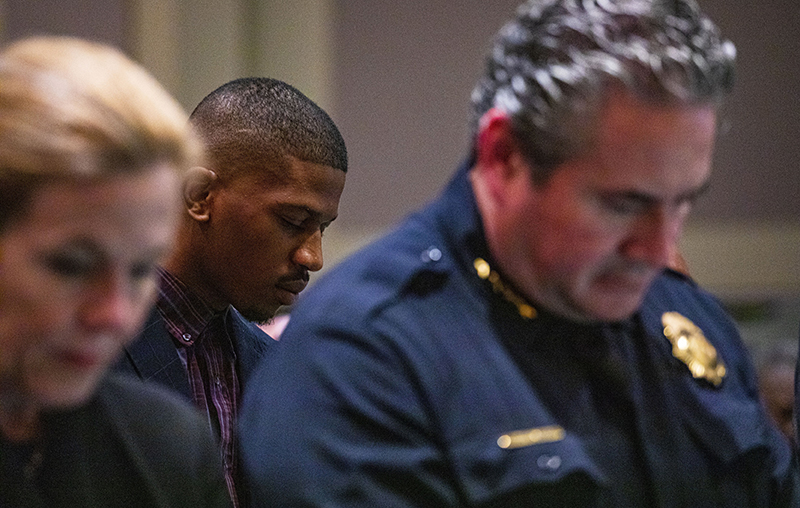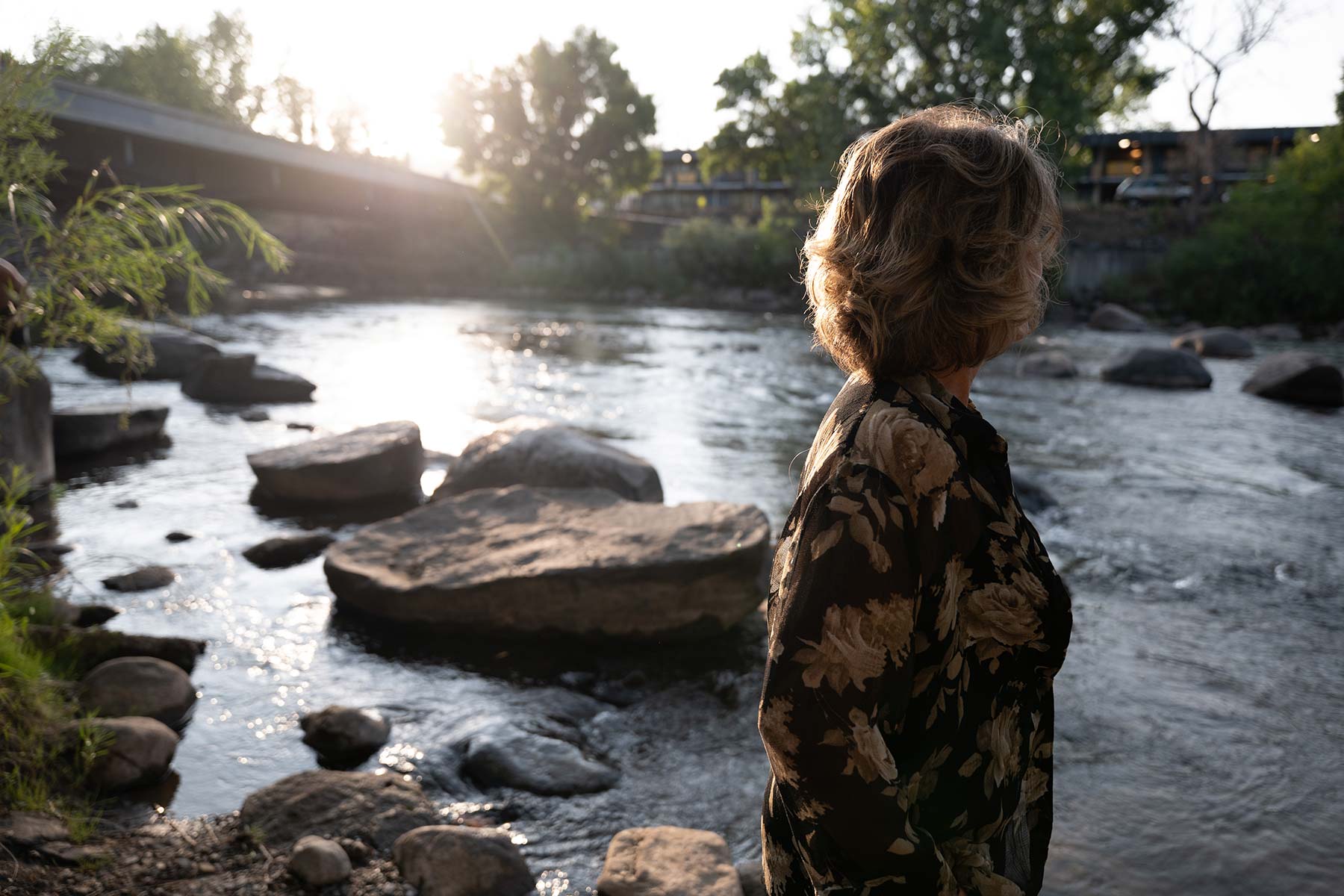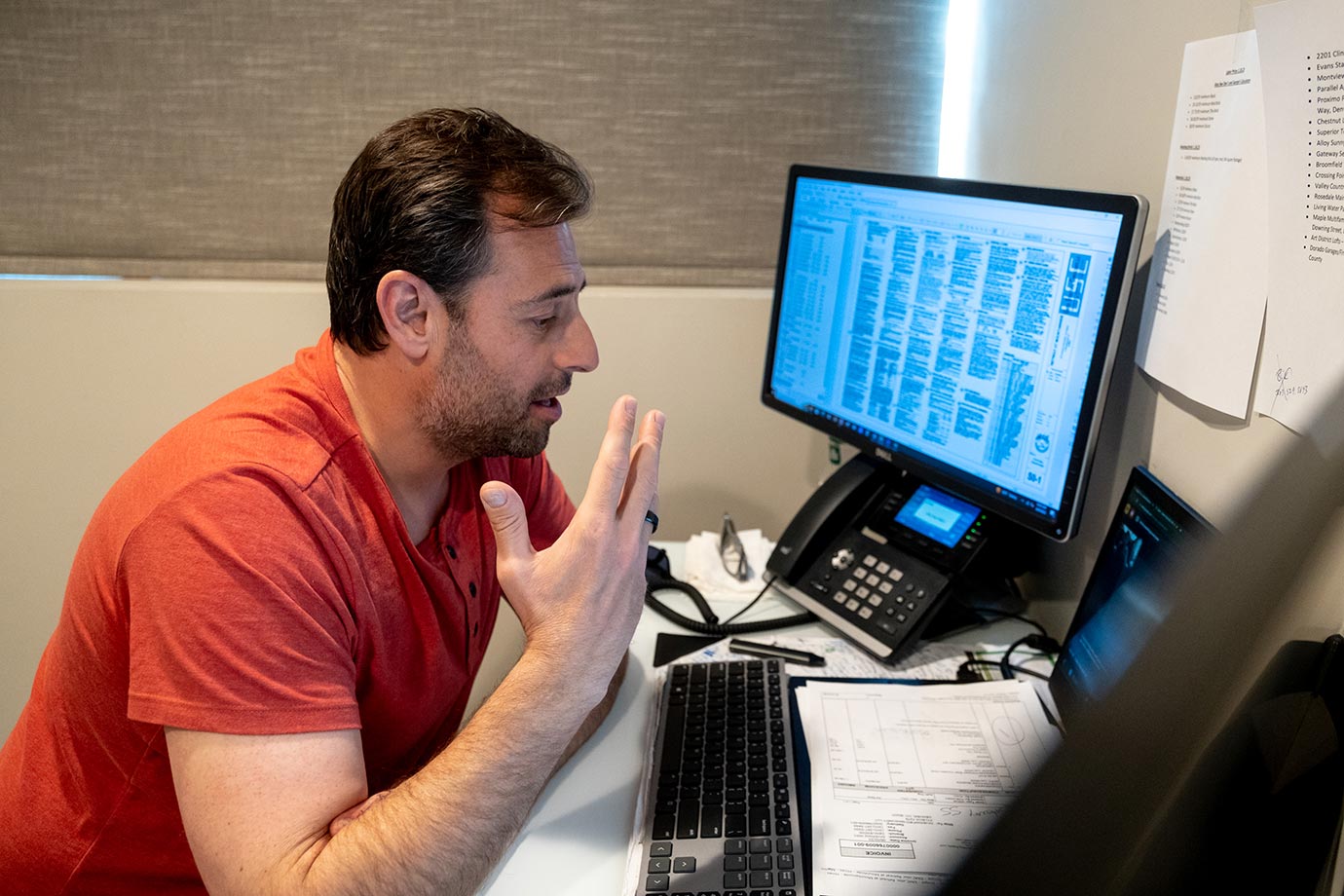As Charles Battle II described getting arrested in a case of mistaken identity, being paraded in handcuffs for merely a few seconds in front of a distant victim not wearing her glasses, then jailed on her say-so, friends quietly unspooled a 50-foot paper chain down the aisle from the church podium where he stood.
As the chain wound all the way to the rear of the packed house at Shorter AME Church in Denver, its purpose became clear: This was the distance from which the victim claimed to identify Battle within seconds as he was lit only by squad car headlights, while she was missing her prescription glasses. With no other human faces for comparison to the person she alleged broke into a car and brandished a knife at her.
Battle, age 17 at the time in 2018 and the son of a Denver minister and community activist, didn’t even fit the original police-channel description of a suspect. The one thing that did match? He’s Black.
His surreal case unfolded and held his family emotionally hostage for six months before finally getting dismissed on the eve of a trial. Said Battle: “It didn’t matter if I was guilty or innocent.”
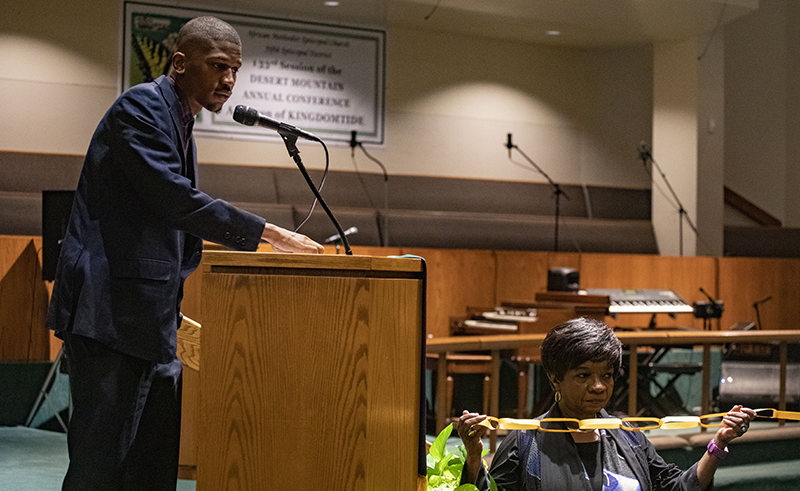
This was what law enforcement calls a one-on-one “showup.” Instead of asking a victim or witness to make an identification using a traditional multi-person lineup, or a “photo lineup” using a group of faces, police take them to the site of an arrest and ask for an immediate ID with no comparisons or context.
Battle was not just decrying injustice to the indifferent fates. In the front pews at Shorter, listening intently, was Denver Police Chief Paul Pazen. Also listening, and about to be grilled by community leaders, were top deputies from the offices of the Colorado Attorney General, the Denver District Attorney, the Denver Mayor, Denver City Council and more.
Community members gathered at Shorter AME on Nov. 14 to make a deeply researched and highly emotional case against one-on-one showups, which critics see as the latest in a series of law enforcement outrages upon people of color. Using one-on-one identification is inherently unjust, they argued, because of deep-seated racism; the poor track record of any eyewitness identifications; the emotional state of the witness or victim; and the hurried and often poorly lit nature of the curbside transactions.
“Showups are an example of a practice that aggravates bias,” said ACLU of Colorado Executive Director Nathan Woodliff-Stanley. “They are unreliable and discriminatory, and they should be severely restricted, if not ended altogether.”
The forum at Shorter AME was organized by Together Colorado, a multiracial, multifaith social justice nonprofit that encompasses a host of civic officials, educators, legal experts and activists from 220 congregations. Together Colorado, which is a Colorado Trust grantee, has been involved in efforts to reform criminal justice, health care, education and other issues.
Police showup IDs leapt onto the organization’s agenda through Sharon Battle, a Together Colorado leader, when she reported in shock that her son Charles had been arrested at gunpoint while walking home from a bus stop in the Montbello neighborhood of Denver. When Sharon Battle told the story to her colleagues, Charles was still in detention at the Gilliam Youth Services Center.
It took six months and a full mobilization of family members and Together Colorado to keep Charles from disappearing into the system, said Kamau Allen, an organizer with the group. They raised money for attorneys and packed court hearings, Allen said, while realizing that hundreds of accused youths in metro Denver don’t get that kind of support.
Cell phone locations researched by the FBI eventually helped Charles, with a judge dismissing the case just before the trial was to start, Allen said. Still, the activists were incredulous Denver law enforcement had pressed the case despite all the issues—a wrong description, the victim’s poor eyesight, the distance, the lighting, even a potential communication barrier between the victim and arresting officers, and lack of other evidence. (The Denver District Attorney’s office declined to comment on Battle’s case for this article.)
“We asked, what the heck is this, is this even legal?” Allen said.
One factor Together Colorado officials learned early on is that no one in Denver or state law enforcement has any data on how often one-on-one showups are used as suspect IDs. The activists also began to learn how many of their own members have racially tinged ID stories similar to what the Battle family endured.
Thomas Mayes, pastor of Living Waters Christian Center and self-described great-grandson of a slave, told his own version of this story to the Shorter AME audience. Mayes first noted that, though he is biracial, he looks African American. Yet “I have experienced a showup where the person the police were looking for was white,” Mayes said, to knowing murmurs from the audience.
Mayes said that as a young man, he was ordered off his bicycle at gunpoint by police, and told he fit the description of a purse snatcher. “Turns out the only similarity was that we were both riding bicycles,” Mayes said.
He overheard the police saying he “must be up to something” because he “shouldn’t be in this neighborhood.” Mayes was set down on a curb, and a cruiser drove by with a window down for an ID. They checked his license against records, and asked him how many times—not if—he had ever been arrested. When they let him go, they told him to stay in his own neighborhood.
Such incidents, Mayes said, are shared dangers for all Black men in America.
“I watch out for my son, who is now 32,” Mayes said. “I call him each and every day to make sure he’s still alive.”
As they laid out their arguments to Pazen and the other law enforcement officials, the community leaders detailed the base inequality that informs many social justice efforts: Blacks in the U.S. are incarcerated at nearly six times the rate of whites, and more than double the rate of Hispanics, according to the Prison Policy Initiative.
Innocence projects around the nation are working to sort out wrongful convictions that affect those inequitable statistics. According to a 2017 report by the University of California, Irvine’s (UCI) National Registry of Exonerations, African Americans make up 13% of the American population but “constitute 47% of the 1,900 exonerations listed” in their registry.
Misidentifications and racial bias often contribute to these errors. “In half of all sexual assault exonerations with eyewitness misidentifications, black men were convicted of raping white women, a racial combination that appears in less than 11% of sexual assaults in the United States,” the UCI report said.
That context magnifies the multiple defects of the showup process for identifications, Together Colorado argues. At the forum, the group highlighted that the U.S. Supreme Court, while not barring showup IDs altogether for criminal cases, has strongly discouraged them.
“Showup IDs are the most suggestive and the least reliable method of ID,” said Together Colorado activist Marilynn Ackermann, describing the group’s research before Chief Pazen came on stage. She noted that 95% of Denver cases are resolved by plea bargain, and that “many people [accused] take plea bargains even when innocent, because their attorney tells them how powerful the eyewitness is, and that juries believe,” she said.
Community organizer Vickie Wilhite then took one podium on stage at Shorter AME, and invited Chief Pazen on stage to take the other podium. He began by saying he was honored to be at the forum.
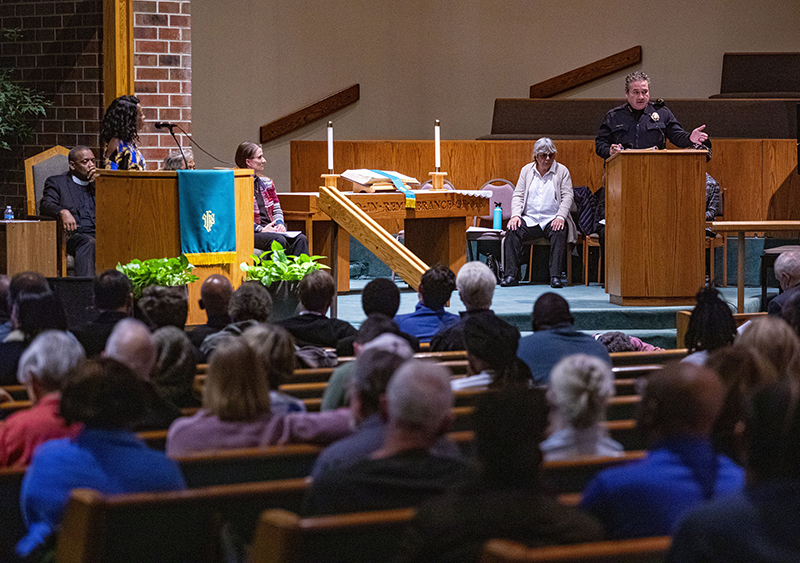
“I want to acknowledge the injustices by law enforcement across the country and in the Denver Police Department,” Pazen said. “We have made our fair share of mistakes; our goals are more in line than what people imagine. We want enhanced relationships with our community. We’ve met four times with Together Colorado, and we’ve never said no [to meeting with them], so I want to make sure that part is out there.”
Wilhite began the public dialogue with Pazen by mentioning Together Colorado had previously asked Denver to eliminate all showup IDs, and the police had declined. Wilhite then asked if Pazen would commit to following a model developed in Wisconsin, which strictly regulates when showup IDs can be used as evidence and what procedures must be followed.
“Our answer wasn’t ‘No, never’—our answer was, give us a chance to take a look,” Pazen said. “And our commitment is to do better.” Pazen said that through department research, provided by both Together Colorado and the state attorney general’s office, “we have identified ways we can improve and strengthen our policy, our training and our data.”
“Let the record show the answer is mushy,” Wilhite said to the audience, which remained vocal but good-natured throughout the evening.
“Will you change your operations manual” to delineate showup procedures, Wilhite asked.
“We are working to do exactly that,” Pazen said.
“Let the record show: Yes,” Wilhite said.
Asked if Denver would agree to 40 hours of officer training on showup IDs, Pazen said ID training is wrapped up in many forms of procedure and evidence training and couldn’t be separated out. “Our commitment is that we will continue to work with partners on the most effective amounts of training,” he added.
“Will you collect data?” Wilhite said.
“We want strong, accurate data,” said Pazen. Investigation forms will be changed to add notations on showups and other IDs, he said—“and we will post it,” he added, to a big cheer from the audience.
Asked if he would set up an advisory board on identifications, Pazen repeated that “we’ve never turned down a meeting,” and committed to a February followup meeting.
Wilhite concluded, “We are very happy and pleased with your partnership.”
Matt Baca, an attorney and director of community engagement for Colorado Attorney General Phil Wieser, also came on stage to answer questions. “How we lift up the dignity of our communities while keeping them safe is one of the most important questions of our time,” Baca said. “This conversation is a chance for us to take stock and improve.”
Baca pledged that the AG’s office would continue working with local police and prosecutors to refine training on showup IDs and eyewitness accounts.
“As long as that practice stays in use, we will make sure the training reflects dignity, fairness and the protection of each person’s constitutional rights,” he said.
Sharon Battle was one of the last to speak to the Shorter AME audience.
“It is powerful,” she said, “that Chief Pazen and other officials, that they came tonight.” A standing ovation followed. She continued that she was grateful for the large crowd, but wondered if anyone was showing up for the hundreds of juvenile suspects her family encountered while rushing to Charles Battle II’s defense.
“I don’t want another mama or daddy or our young people to experience that alone,” Sharon Battle said. “I want them to know they have a chief who’s going to do the best he can. … There is no justice until there’s justice for everyone. We are Denver’s daughters and sons.”
